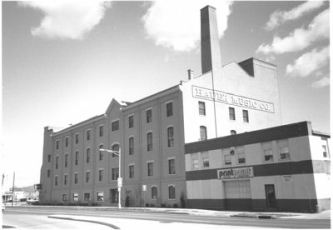BrainWave Prepares Documents for Clients and Client Vendors regarding Federal Processes, materials, and Standards for Historic Preservation regarding commercial and residential structures:
 |
|
Historic Preservation Tax credits saves assets and helps communities build upon their unique historical strengths. |
The Federal rules and suggested practices for a certified tax credit restoration are comprehensive and extensive. They guide rehabers through the enormous number of choices and options for the preservation of a properties original historic fabric. Correct selection of these options will determine a projects success in gaining the historic preservation tax credits. The following are excerpts from the Federal National Park Service website, and are a good starting point in understanding the more detailed information on the various websites which collectively constitute the rules governing the award of the tax credits.
"Rehabilitation projects must meet the following Standards to qualify as “certified rehabilitations” eligible for the 20% tax credit for historic preservation.
The Standards are applied to projects in a reasonable manner, taking into consideration economic and technical feasibility.
The Guidelines assist in applying the Standards to rehabilitation projects in general; consequently, they are not meant to give case-specific advice or address exceptions or rare instances. For example, they cannot tell a building owner which features of an historic building are important in defining the historic character and must be preserved or which features could be altered, if necessary, for the new use. Careful case-by-case decision-making is best accomplished by seeking assistance from qualified historic preservation professionals in the planning stage of the project. Such professionals include architects, architectural historians, historians, archeologists, and others who are skilled in the preservation, rehabilitation, and restoration of the historic properties. These Guidelines are also available in PDF format.
The Guidelines on Sustainability for Rehabilitating Historic Buildings stress the inherent sustainability of historic buildings and offer specific guidance on “recommended” rehabilitation treatments and “not recommended” treatments, which could negatively impact a building’s historic character. "
The following text is from the NPS website on rehabilitation. "Rehabilitation" is the most commonly used standard of the four standards possible in Historic Tax Credit projects.
"Rehabilitation is the most commonly used of the four approaches to the treatment of historic buildings
The Standards provide direction in making appropriate choices in planning the repairs, alterations, and additions that may be part of a rehabilitation project. The accompanying Guidelines apply the Standards and describe specific treatments that do and do not meet the Standards. The Standards for Rehabilitation are regulatory for the Historic Preservation Tax Incentives program and are the Standards most often used by local historic district commissions nationwide.
The Guidelines for Rehabilitating Historic Buildings apply the Standards to historic fabric, such as masonry and wood, and historic features, such as roofs and windows. The Guidelines on Sustainability stress the inherent sustainability of historic buildings and address the application of the Standards to solar technology, weatherization, and other energy saving treatments.
Technical Preservation Services has developed a wide variety of guidance on applying the Standards for Rehabilitation. Much of it has been developed in the context of the Historic Preservation Tax Incentives program, but it is applicable to all rehabilitation projects.
Cumulative Effect and Historic Character explains that projects meet the Standards when the overall effect of all work on the property is consistent with the property’s historic character.
Interpreting the Standards Bulletins are case studies of specific rehabiliation treatments that do and do not meet the Standards.
Planning Successful Rehabilitation Projects provides guidance on applying the Standards to some common rehabilitation concerns, including windows, interior treatments, additions and new construction, and modern requirement, technologies and materials.
Incentives is a guide to the Historic Preservation Tax Incentives program and includes examples of additional treatments that do and do not meet the Standards."